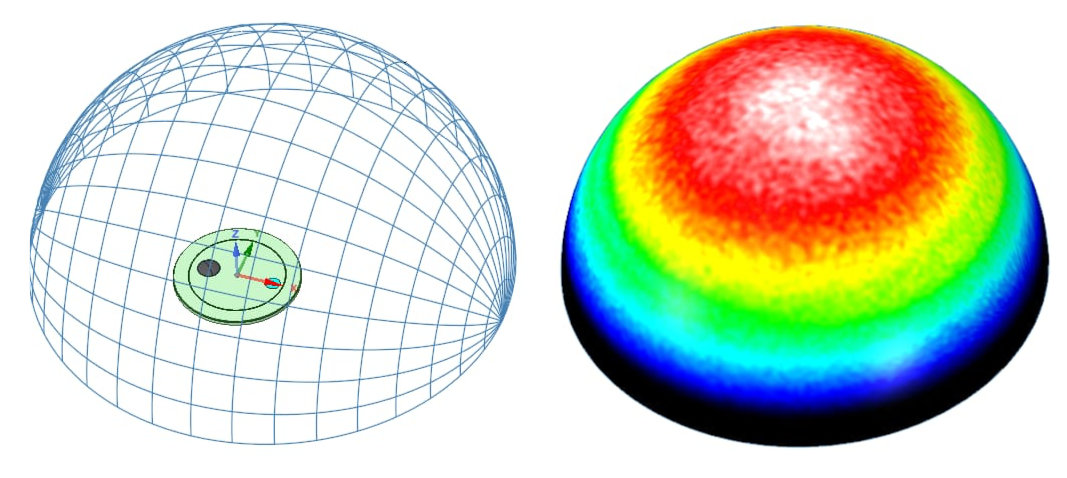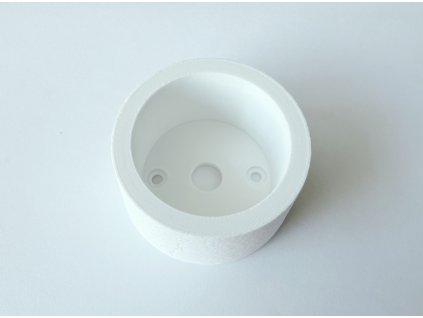Presence sensor
A top-tier sensor for detecting motion and presence in a room. Thanks to bus communication, the entire configuration and diagnostics can be performed remotely, and the sensor can return three separate signals: motion, presence, and alarm.
| Category: | Sensors |
|---|---|
| EAN: | Choose variant |
| naskladnenie: | 16.12.2025 |
Detection angle 120° ( ±60° ), meaning that when the sensor is placed at a height of 3m, the motion detection diameter is 8m, and the fine motion detection diameter is 4m.
Do not install two sensors facing each other or within a distance of less than 4m from each other.
Installation hole: diameter 51 - 56mm. Outer dimension: diameter 61mm. A detailed drawing can be downloaded in the Related Files section.
UI input for connecting an NTC thermometer or status contact.
IP20 protection, operating temperature: -20 °C to +55 °C, condensation must not occur. The sensor is neither waterproof nor dustproof and is intended for indoor use.
Vibrations or shocks may cause the sensor to malfunction.
Maximum power dissipation 0.5W
Power supply 24 VDC ±10%
Motion and Presence Detection
Radar Sensor
RADAR // DUAL // DUAL-CO2
- Motion detection up to 10m. Detection of stationary persons (micro-movements) up to approximately 4m.
- Detection angle 120° ( ±60° ), dead zone approximately 50cm.
- Partial ability to limit the detection distance. The signal consists of 16 levels, each level having a length of approximately 70cm.
- Through software calibration, noise tolerance can be adjusted at different distance levels. For example, if a fan is in a fixed position relative to the sensor, calibration can desensitize that level to prevent false motion detection.
- 24GHz waves can penetrate thin materials such as curtains or drapes, and to some extent, even interior doors, plastic, or glass.
- Unlike a PIR sensor, radar does not respond to temperature changes.
- Disadvantage: False alarms can be triggered by a rotating fan or the movement of a fixed object in the room (e.g., an automatic window vent opening).
- Warning: Ignoring pets or robotic vacuum cleaners in a small radius under the sensor requires significantly reducing sensitivity.
PIR Sensor (Passive Infrared)
DUAL // DUAL-CO2
A pyroelectric infrared sensor that detects changes in infrared radiation. It can recognize motion and presence of heat-emitting objects, such as the human body. It requires a direct line of sight for detection.
Motion is detected by the change in emitted heat between zones:
- Detection angle 125° ( ±62.5° )
- Premium Panasonic PaPir EKMC260811 sensor
- The sensor may not function correctly if there is no movement of the heat source, no temperature change in the source, or if other heat sources are present.
- The sensor may also detect non-human heat sources. In these cases, sensitivity should be reduced:
- Small animals (e.g., cats, dogs, rodents) moving in the detection zone.
- Strong light sources such as sunlight, halogen lamps, car headlights, or other intense light beams hitting the sensor. Reflected light, for example from a glossy floor, may also cause detection issues.
- Sudden temperature changes caused by airflow from HVAC, heaters, or humidifiers.
- Advantages: Reliable detection of larger movements, good resistance to false alarms caused by electromagnetic interference.
- Disadvantages: Does not work through obstacles, lower sensitivity to very slow or minimal movements.
- The sensor is enclosed to minimize issues with spider webs or insects.
Evaluation Logic
RADAR // DUAL // DUAL-CO2
The presence sensor evaluates and transmits three states in parallel via the bus. Each state can be finely configured in service settings:
- Motion: Sensitive and fast reaction to presence, equally sensitive and fast reaction to its loss.
Example – night hallway lighting. A fast reaction to movement and immediate turn-off when movement ceases is required. - Presence: Cautious reaction to presence, highly sensitive reaction to prolonging presence over a sufficiently long time (typically 10 minutes).
Example – In a living room, a clear movement is expected when entering, but presence extension requires only a minimal motion at least once every 10 minutes. - Alarm: Very cautious reaction to presence, prolonging presence is not important.
Example – a person walking under the sensor, with movement lasting longer than a second.
Illumination Intensity Sensor
RADAR // DUAL // DUAL-CO2
- Range 0 to 1000 lux
- Detection angle approximately 120° ( ±60° )
- Brightness is evaluated by two sensors, 400 - 650 nm and 550 - 950 nm, with the final lux values calculated as a combination of both sensor outputs.

Integrated CO2 Sensor
DUAL-CO2
Ventilation openings for the CO₂ sensor are placed around the light guide. Since the openings are minimal, there is a measurement delay of approximately 10 minutes compared to direct air measurement.
Warning – in a room without air circulation, CO₂ values near the ceiling may be lower than the actual values at bed height (during sleep). We recommend using CO₂ measurement only in areas with continuous air recirculation.
.svg)











